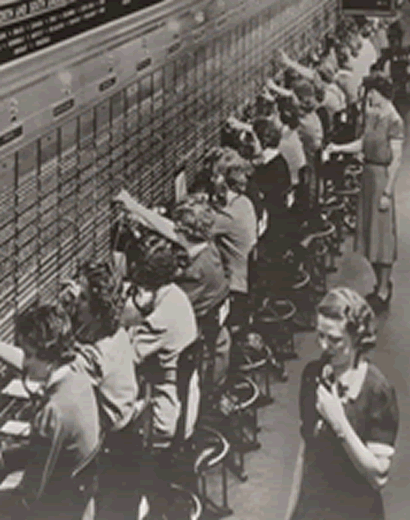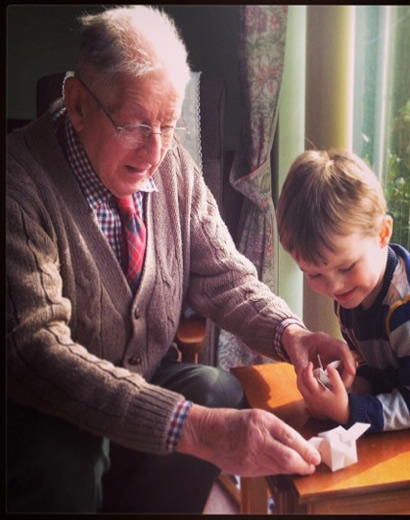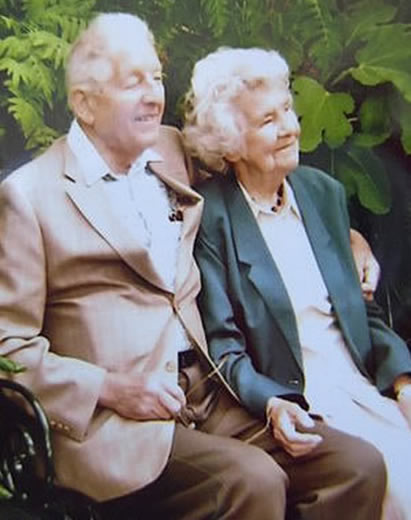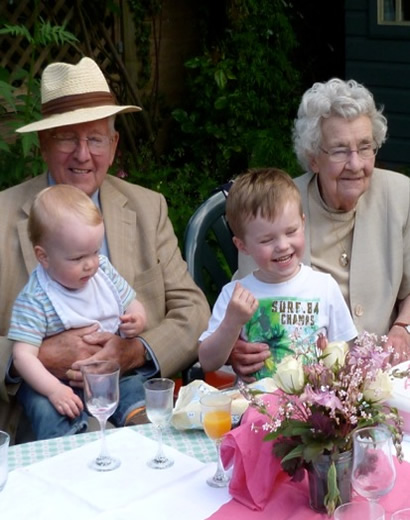Memories of the London manual exchanges
Why there were so many
In 1912 telephone services (except Hull )were nationalised and became Post Office Telephones. and was financed by the Treasury, From then on the money that was spent was what was allocated each year. The procedure then, as it probably is today, was that all departments eg the Army, the Navy, Civil Service etc., submitted their spending plans each year , based upon their priorities, and then the Treasury considered them, bearing in mind the money they had to spend, and allocated to each department their share of the cake, as it were. All departments then scaled their programmes down accordingly (rarely did they get more than they asked for), as I suppose they do today.
To enjoy all the Images Click on Large image and then the arrow for slide show
In 1912 telephone services (except Hull )were nationalised and became Post Office Telephones. and was financed by the Treasury, From then on the money that was spent was what was allocated each year. The procedure then, as it probably is today, was that all departments eg the Army, the Navy, Civil Service etc., submitted their spending plans each year , based upon their priorities, and then the Treasury considered them, bearing in mind the money they had to spend, and allocated to each department their share of the cake, as it were. All departments then scaled their programmes down accordingly (rarely did they get more than they asked for), as I suppose they do today.
In the case of Post Office Telephones this meant that in the thirties, as far as growth was concerned, they had to balance out a programme of extending existing exchanges, including manual exchanges, and replacing manual exchanges a more expensive business. As a result, many manual exchanges were kept going by extensions, rather than automatic replacement. Politically it was important that waiting lists should be kept low, but expenditure kept to a minimum.
As the demand for telephone serviced increased after the War, waiting lists began to grow and manuals continued to provide service right up to the last small manual somewhere in Scotland, in the seventies. It is worthwhile remembering that when the service was privatised, investment flooded in and all the remaining the old time automatic exchanges were replaced in a few years, compared with the forty six years from (1924 to 1970) to replace manuals under Treasury control.The result ,therefore, of all these policies and pressure meant that in the beginning of the 1940s , a good proportion , probably about 25% of London exchanges were still manual, , a technology of a much earlier age
Size
As the telephone network evolved in the early 1900s exchanges were given the name of their town or district and all routing of calls was done by operators. With the introduction of automatic working in the 1920s routing could be done by the caller by putting routing digits in front of the wanted subscribers number, but it soon became apparent in large towns ie London, Liverpool, Birmingham, Manchester, Glasgow and Edenborough, that routing would be complicated .In those early days it was thought unreasonable to ask callers to dial more than seven digits for their call, so for these large towns the Director system was introduced. It allowed most exchange names to be retained, with the first three letters , which lined up with digits on the dial, together with the four numerical digits of the called number and be all that was needed to make a call no matter how complicated the automatic routing of the call. This was done by introducing a switching stage at the calling exchange, called the director system, which could translate the three name digits into the correct routing digits. One of the immediate results of this policy was that exchanges in these large areas , both automatic and manual, were restricted to 10,000 numbers By the 1940s lots of the big London manuals using all 10,000 numbers had become automatic but smaller manuals still represented over 25% External arrangements. When the public telephone services first started in the late 1800s subscribers were connected to exchanges by open copper wire and this meant huge frames on top of exchangeBuildings ,where all the wires were terminated, to support the weight of copper.. In bad weather when ice formed on the wires it increased this weight many times and this meant buildings and particularly roofs had to be built very strong . These frames did not feature long in exchange design because of the invention of multi core cables which entered exchanges underground and roof frames became obsolete. However some buildings dating back to that period still existed in the forties and I remember standing in the switch room on the top floor at Clissold manual exchange in North London looking up at the impressive girder network that had been installed when it was built. Multicore cables rapidly became the norm, some over 1500 pairs, covered in lead sleeves with each wire paper wrapped with the paper coded. When the cables entered the exchange they were joined on to lead in cables which were still lead covered but this time the wires were not enamelled and were silk covered colour coded for ease of soldering , and terminated on a Main Frame, one side for cables and the other for exchange numbers so that any pair could be wired to any number.
The Switch room
The main feature of a manual exchange was, of course, the switch room where the overriding principal was that any operator could connect a call to any number on the exchange. To do this the switchboards were provided all round the room ,those dealing with outgoing traffic called A positions and those with incoming traffic called B positions. An A operator position had 17 pairs of cords to connect callers and a key shelf to control the keys controlling the cords, including supervisory, a ring key and a meter button. The face of the suite of positions consisted of panels, with 8 panels to every 3 positions. The bottom panels was used for calling signals with each subscriber having one calling appearance, and then came a section for outgoing junctions. The upper part of each panel was used for the multiple, which was repeated each 8 panels all round the board. A full 10000 multiple was quite high and for this reason operators had to be at least a certain height to ensure that they could reach the full multiple. The wiring for the multiple came up in small cables covered in an asbestos braiding covered cables , turned 90 degrees called the cable turning section, and onto the first 8 panels, then on to the next etc Amazingly, the spare space in the cable turning section where the cables came up from below were often packed with small drawstring bags full of asbestos as a fire precaution .Inside the cables the wires where colour coded ( blue, orange green brown slate and combinations of these ) and on each jack they were fanned out and laced into a form dipped in hot wax to keep its shape. This meant that with a 10,000 line exchange and with three wires per subscriber (tip, ring and sleeve ) there were 30,000 wires coming into each 8 panel reputation and 30,000 wires going out to the next reputation and so on to the last position. It was a very formidable bed of wires!Some types of Manual Junction working
When exchanges first started junction arrangements were simply on a call and answer basis but as the system grew they got more complicated. Some systems are described as followsOrder Wire Working
This was used between two manuals with a fair amount of traffic. A special circuit was provide to connect the calling operator to the headset of the operator . on the order wire position at the called exchange. The procedure was then for the calling operator to press the order wire button to the called exchange and give the name of the calling exchange and the number wanted at the called exchange and for the order wire operator to designate a junction she would connect to the wanted number and all the calling operator had to do was connect her calling sub to that junction. It was a very quick type of working for experienced operators but it could be difficult at busy times because more than one exchange was connected to the order wire operators headset and she had to take control and make sure she gave the right advice to the right exchange. Key sendersAs the number of automatic exchanges grew it became more important that the operator at the manual exchange could get quick access to the subscribers on auto exchanges and a key sender system was introduced. Each A operator position was fitted with ten keys in the key shelf with similar distribution to a dial, and key sender junctions were provided to nearby autos . She would then plug into such a junction and key out 4 digits, which went in the form of a combination of VF pulses( 500,600,750and 900) when it was received on special equipment that decoded it to Strowger pulses and sent it via selectors to the right number The four mechanically tuned relays each consisted of a little bobble suspended between two contacts with the mounting of one contact connected to a tuned reed that was influenced by a coil that vibrated to the resonate frequency ,causing the bobble to move and break circuit. The bobbles had to be kept clean with benzene and a favourite clear was “cleaned sticky bobble”. For auto exchanges without 4digit VF junction ,7 digit key sender junctions were provided to a sort of tandem exchange . The calling operator plugged into circuit, waited for a pip-pip and then keyed out seven digits and at the tandem exchange it was first changed by senders into seven strowger pulses and then went into directors which translated it into a code that routed it via the outgoing network of that exchange to the called number. Dials were not provided.at London manuals at that time.Coded Call Indicator ( CCI ) working
To cope with calls from automatics into manuals, without the operator having to enter circuit, CCI working was introduced. This provided special incoming B positions each with a display panel in the key shelf and with a single row of 36 cords.
At the outgoing auto calls were routed by directors to special coders that recorded and stored the 4 digits , changed them into a combination of heavy and light pulses that was sent to the manual exchange where they were decoded and used to display the required number. The operator on that position could then use any of her 36 cords to connect to the multiple If the system was busy calls could be held up on the coder until circuits were available It was quite a good system and an efficient operator could often get all 36 cords up in the busy Hour
Staffing
The most important principle of manual exchange working had to be that staff must match traffic requirements over the full 24 hour period , rising up to the morning busy hour and again in the afternoon busy hour and on to an evening busy hour, all depending on the type of exchange area served. To achieve this, the Post Office starting from quite early days introduced a complicated procedure based in the first place on the time and make up of basic calls, long before the Time and Motion Studies of the forties was introduced in industry.After analysis, types of calls were given values and allowances for additional features and these were used on Record days to derive staff requirements over the day . These were entered on a straight line diagram and were the basis for staff needs and consequent rotas. At this stage unions were consulted and if all went well acceptable rotas were introduced and accepted by all.
During the night period when traffic reduced to a minimum, the few night staff on duty used to pull all the chairs away from the board and then walked round answering calls as they appeared and clearing down ones that had finished.
Many operators were given clerical allowances for non operating work but in most cases these people had to work on the board in the busy hour to make up the right number. The result of all this was that if traffic remained true to form all was well but there were many things that could cause surges of traffic when it would be difficult to find staff to match it and this was a big weakness of manual working.. This was readily apparent .for example, after an air raid when, at the All Clear, everybody picked up the phone to check their loved ones were ok and the board lit up. It was even worse after V1s fell and worst of all was when a rocket came out of no where In the Provinces operating staff came under the Head Postmaster and the telephone side under the Area Telephone Manager but in London it was all under the Area Telephone Manager
Day female staff covered the day period from 8 am to 6 pm and night male staff covered the rest with some part time female and male staff They were two separate hierarchy. Discipline and Supervision
Although the general conception was that operators sat doing their knitting instead of answering calls, the reality was very different. Before entering the switchboard operators were told which position to go to and while she was there she did not leave without the supervisors permission. Meal and tea breaks were all officially laid down and she would expect to be relieved at those times, but for all other things ,such as going to the toilet, known as an urgent, she had to get the supervisors attention and then permission to be relieved and another operator temporarily take her place but she was only allowed a few minutes away. There were also casuals which were about 10 minute breaks if she had been on a long session and the traffic was light. Assistant supervisors stood behind telephonists ,one per seven positions, and one of their jobs was to spot any operator too busy to answer calls on her home section when she would check unanswered calling subs and call out their number so that operators who were not so busy could pick them up in the multiple and deal with the call. Talking to your neighbouring operator was not allowed and neither were private calls on the switchboard but obviously it went on and a lot depended on how busy the traffic was and how strict the individual section supervisor was.
Manual Closures
All manuals were doomed to be replaced by Autos. In non Director exchanges where the old manual numbering schemes started with single digits, it meant that everybody had to be changed to 3,4,5 or maybe 6 or 7 digit working , but in Director areas this problem did not happen as they were already 4 digits. However, in Strowger only certain groups of numbers could provide PBX working so this often meant that PBX groups had to have a number change on conversion. Furthermore, PBX groups of 20 or over lines had to go on special Over 20 PBX groups, again meaning a number change. All this called for approved lists which had to be prepared and distributed to all departments involved. Very often it involved lining up with a new issue of the directory . Changed number lists had to be prepared ready for extensive use at change over.The ready for service date of the new exchange was the most important but the brought into service date was decided by many factors. Subscribers had to be advised well in advance to allow for stationery and publicity changes. and in some cases told how to use an automatic telephone . All Divisions had their own targets to line up with the BIS date.
The date and time of the actual change had to be when traffic was light and very often the time was early in the day when all staff were available. and 8am was a popular time. The final ok was given by a controlling officer in the switch room who confirmed that no 999 calls were in progress. The immediate result of the change over was that calling signals ceased and the exchange seemed to go dead, as indeed it did. For many of the operators who had served the board for many years it was an emotional experience.
After it closed the space would probably be wanted for future growth but during the war when staff was short it was quite common to leave them until after hostilities ceased. At such an exchange it was an eerie experience to go into the old abandoned test rooms.
Staff Welfare
For many years the P.O. made provision for operators to have their own canteens and both a large dining room ,with tables and chairs, and a fully equipped kitchen was provided at large London manuals and auto manuals. A suitable person was employed as a cook but was listed and paid as a cleaner, and a volunteer operator called the caterer with cooking and organising ability was allowed to spend most of her time in the kitchen although she had to go into the board if required. Each exchange had its own club and staff paid for meals teas etc as it was consumed. At the end of the year the books were balanced and any profit distributed among the members. In wartime a ration allocation was made to exchange clubs and shopkeepers were very good at letting the exchange have any goodies available on general sale. Standards were quite high and a well organised canteen led to a happy staff and was encouraged by management.Engineers were also supplied with full cooking facilities in linesmen rooms including gas cookers pots and pans etc. and at autos with no manual board on the premises they very often ran their own clubs but they were not supported by management as the operators were. At manuals and auto manuals it was common for engineers to get their meals at the operators canteen but they were not allowed to use the dining room and had to collect their meals in the kitchen and not use the hatch into the dining room. This often suited the lads with healthy appetites as the cook was known to serve larger portions than what she did to the sometimes diet conscious operators at the serving hatch.
Wartime arrangements
Early in the war, all London manual exchanges were provided with three positions in basements, covering one complete repetition of the multiple ,together with duplicated calling signals for emergency subs, outgoing junctions etc., so that in the event of air raids, staff could vacate the switch room, usually on top floors, and retire to the comparative safety of the basement and provide basic emergency services. At auto manuals also three positions were provided for similar reasons.In London as the air raids over the winter 1940 to 1941 dragged on, switch rooms were often kept manned until the noise level suggested things were heating up. With V1s staff also sometimes had a fatalistic outlook but with V2s which came out of nowhere at any time switch rooms were kept manned. Always ,after raids or V weapons switchboards would light up with people calling their loved ones to see if they were OK, causing havoc at manuals.
During the war in London there was a relaxation of the day and night divide and day staff often worked until 11pm , although supervisors kept to their normal times. There was also a relaxation in the dress code and the wearing of trousers was allowed.
.
Conclusion
In their hay day a big manual exchange in the busy hour was a real hive of activity with all the operators going full out with a hum of voices and the sound of cords going in and out.Most exchanges had a good and friendly atmosphere , in spite of the almost Dickensian approach to discipline, and many friendships were made that lasted a lifetime




